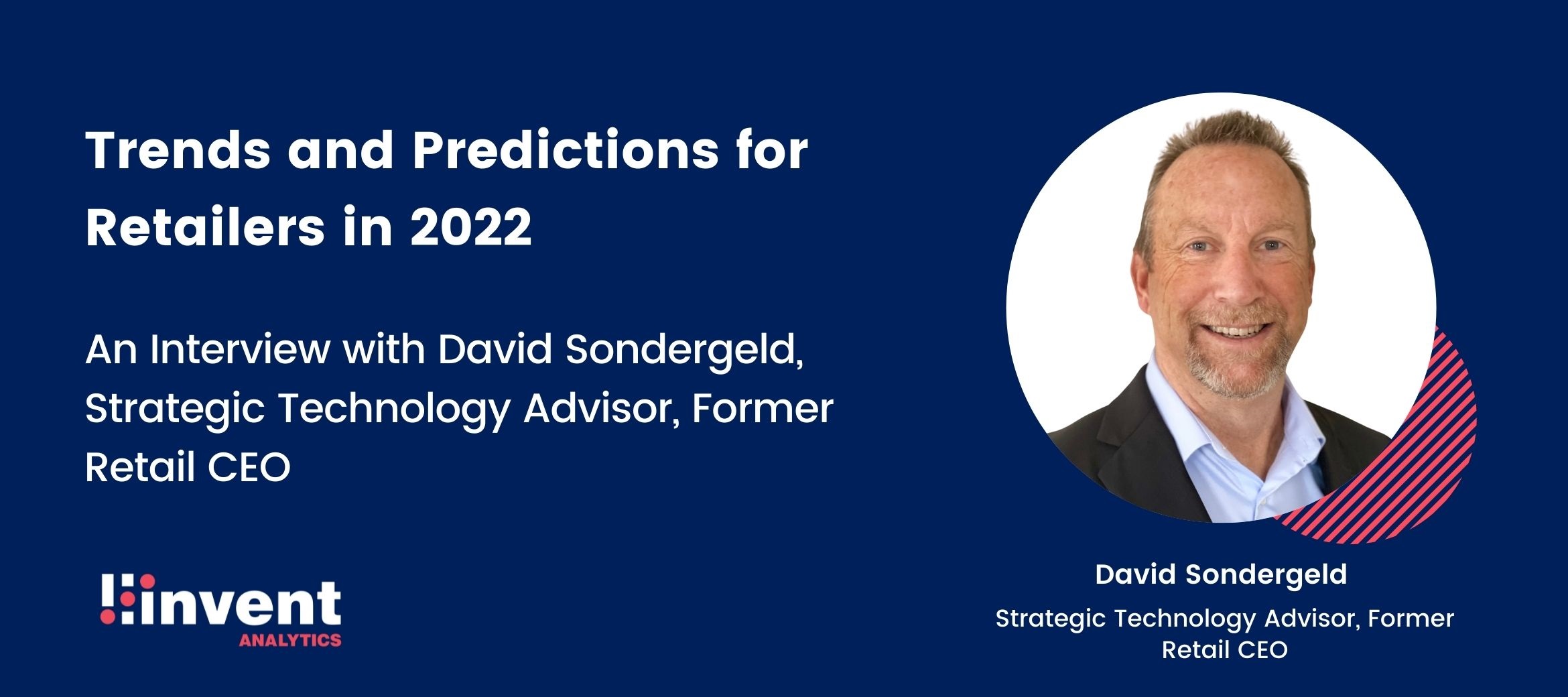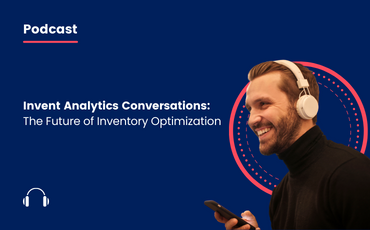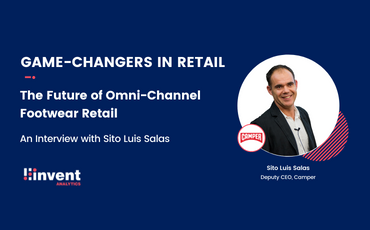
Trends and Predictions for Retailers in 2022
An Interview with David Sondergeld, Strategic Technology Advisor, Former Retail CIO
In 2021, retailers had to tackle many great challenges between the ongoing effects of the pandemic, supply chain shortages, and consumers’ rising expectations around omni-channel experiences. There is no doubt that it was challenging.
The retail landscape is shifting, accelerating supply chain leaders’ need to reimagine their operational models. In fact, according to Gartner, nearly all retailers are planning to invest in making their supply chains more agile (96%) and resilient in (90%) in 2022.
In this interview, we sat down with David Sondergeld, Strategic Technology Advisor, Former Retail CIO. We asked him about the trends to expect and predictions for retailers in 2022.
What are the key planning predictions for retailers in 2022?
When we talked about omni-channel in the past years, we talked about retailers planning for every product they needed at each of their stores for every customer choice. And getting that accurate was of the utmost importance.
Retailers still need to do that in the omni-channel era, but it is more important to have the right amount of inventory in their enterprise to get to the consumers through all the different ways. They need to deliver what consumers want when they want it.
We see that forecasting demand accurately is essential in the omni-channel world. Therefore, in 2022, “Demand Forecasting” must take center stage.
It is also essential for retailers to position inventory extremely smartly. Retailers want to get the right products to the right stores at the right time for the consumer. That means they need to be more efficient. When a consumer walks into a store to purchase an item, and if the retailer doesn’t have the product in their size, they don’t mind going to the next store to buy it. So, retailers need to make sure that they get the product in the inventory accurately, and they also fulfill that demand through the omni-channel capabilities.
What are the top planning trends to expect in 2022?
In the last five years, omni-channel has been the big buzzword. It is no longer a buzzword. It is now table stakes. Companies that weren’t ready for omni-channel pre-pandemic are in trouble. In 2022, they must have AI-based omni-channel planning capabilities and be prepared for what’s coming in the next wave.
Retailers need to serve the customer in the ways that they want. And it’s obvious that more customers prefer omni-channel shopping now. Many consumers are going online, using digital channels for shopping. And some others prefer brick-and-mortar physical shopping experiences. So, retailers need to see all these channels and fulfill that demand in the most cost-efficient way.
Invent Analytics takes that omni-channel approach to the next level. They deliver speed to value. Bringing a holistic approach to solve the omni-channel problem, Omni-AI enables retailers to profit-optimize their supply chain network, inventory planning, and execution.
What are the biggest opportunities for retailers to win in the omni-channel world?
The opportunity for retailers is focusing on financial optimization at their supply chain design, planning, and execution. Again, this comes back to the adage of “right product, right place, right time and right cost”. Getting that right has been retailers’ focus for decades and getting that wrong is highly costly.
There is a huge opportunity right now for retailers to get that right. They must start with demand planning, be extremely granular in demand forecasting and optimize their planning and fulfillment in an omni-channel fashion.
So that they do not go out of stock at one location and while they carry excess inventory in other. They also need to have distribution points, and I don’t mean distribution centers. They could be pull points and they could be store locations. In any way, getting it to the consumer in a speedy way is essential.

Many retailers use tools that are built in-house. What are your thoughts here?
As a retail CIO and a retail leader, the big question has always been about “Buy vs. Build”- putting products in-house or in the cloud. What do we do?
Basically, retailers want results, and they need them fast. They want rigorous A/B tests, speed to value, ROI in a very short amount of time.
I’m a believer that “build” days are over. There are so many great products out there today, and businesses quite frankly can’t take a year and a half to run waterfall-style projects. They need agile speed and functionality, and once they have those two things, they are on their way to winning.
Today’s solutions are sophisticated. They are nimble, configurable, cloud and SaaS-based. Retailers can work with SaaS-based vendors such as Invent Analytics, run a PoC, and in a very short amount of time before launch. Invent Analytics proves the value and the benefits of their AI-based solutions with A/B tests and kickstarts projects in a short amount of time.
Thank you David.
Did you enjoy reading this? You might also be interested in reading Omni-Channel Choices for Retailers’ Success Today and Tomorrow and Omni-Channel and Retail KPIs: The Good, the Bad and the Future.





